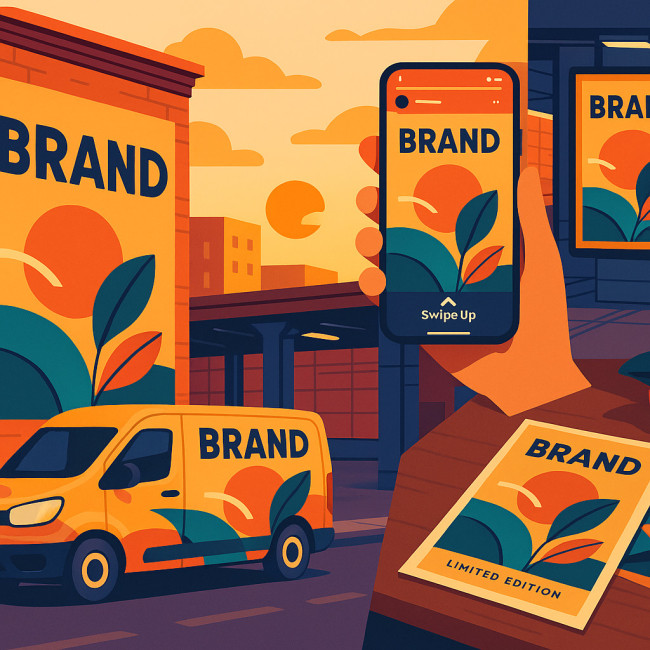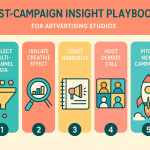Licensing rules when artvertisers reuse your artwork across multiple ad channels
When an artvertiser asks to repurpose your illustration, motion loop, or mural across billboards, Instagram Reels, POS displays, and more, the legal landscape changes fast. This guide shows you how to price, negotiate, and monitor licences so every additional impression still pays you fairly—without choking the campaign's momentum.
Why multi-channel reuse changes the licensing equation
Each advertising channel adds fresh exposure, fresh file specs, and fresh legal risks. A subway screen, for example, triggers public-performance rights, while a Pinterest pin lives forever and demands perpetual hosting fees. Treating every medium as “just another placement” leaves money—and control—on the table.
- Risk multiplication. More channels mean more potential infringements. List them exhaustively.
- Asset adaptation costs. Cropping, resizing, or animating artwork often counts as a derivative work—bill separately.
- Audience reach escalation. Media buyers bundle channels to hit larger demographics, so your licensing fee should scale with reach.
Need a primer on how studios structure these campaigns? Our deep dive on the business model behind artvertiser agencies lays the groundwork.
Key clauses to insert before signing
1. Usage scope
Define the exact list of media where the artwork may appear: “static 4 K digital billboard, 1080 × 1920 Instagram Story, 300 × 250 web banner …”. Add an “all unspecified media excluded” sentence to stop scope creep.
2. Territory
Specify countries or regions. If the brand insists on “worldwide,” hike the fee or shorten the term dramatically.
3. Term
Set a fixed end date and a renewal option that triggers a fresh fee—ideally at a higher rate. Rolling one-year renewals are industry standard.
4. Exclusivity tier
Decide whether the advertiser enjoys exclusive use in their sector or across all sectors. Narrower exclusivity keeps your future licensing options wide open.
5. Derivative works & adaptations
Include language such as: “Any modification, animation, or filter applied constitutes a derivative work requiring written approval and additional compensation.”
6. Credit & moral rights
Even if local law allows moral-rights waivers, retain the right to be credited where feasible. A simple “© Your Name” in video end-cards strengthens brand-artist parity.
7. Audit & reporting
Demand periodic media-plan reports so you can verify usage matches the licence. State penalties (often 200 % of the unpaid fee) for unreported placements.
Fee uplift references by channel
| Channel | Typical Reach Multiplier* | Suggested Fee Uplift |
|---|---|---|
| In-feed social post | 1 × | Base licence |
| Paid social ad | 4 × | +150 %–200 % |
| Digital out-of-home (DOOH) | 8 × | +300 % |
| Print billboard | 6 × | +250 % |
| Point-of-sale display | 3 × | +120 % |
| Brand website hero | 2 × | +80 % |
*Multipliers derived from the 2023 Design Council “Design Economy” readership and OAAA out-of-home reach studies.
Pricing models that protect your ROI
Flat-fee per channel
Simple to administer. Ideal when each asset sits in a silo (e.g., web banner never cut into a TV spot).
Stacked fee schedule
Start with a base licence, then add pre-negotiated percentages when new channels launch. Automates fair pay without renegotiation.
Royalty on ad spend
Charge 1 %–3 % of gross media spend. Works well for large performance-marketing campaigns where spend—and exposure—fluctuate.
Time-based bundle
Offer 12 months multi-channel use for a premium price, renewable at a higher tier. Brands value predictability; you lock in future revenue.
Looking for royalty benchmarks outside traditional media? Our guide on royalty models in limited-edition object design shows parallel structures you can adapt.
Negotiation checklist: walk into the call prepared
- Inventory every channel in the draft media plan.
- Assign a fee or percentage uplift to each channel.
- Define renewals, exclusivity, and geographic splits.
- Prepare a fallback package if budget pushback arises—e.g., fewer channels at the same price.
- Set approval turnaround times so campaign deadlines do not override your rights.
- Document sign-off in a cloud contract platform; no email “handshakes.”
Compliance & monitoring tactics
After the ink dries, the real work starts:
- Reverse-image search. Tools like Google Lens pick up unreported placements quickly.
- Ad-tech trackers. Ask the artvertiser to whitelist you on their Facebook Business Manager or Google Ads so you can verify impressions.
- Public proof. Encourage clients to tag you on social posts; it boosts your profile and creates a public audit trail.
- Escalation path. For breaches, invoice immediately at penalty rates before considering legal action.
Need an example in a niche medium? Our explainer on licensing perishable edible art shows how strict monitoring reduces misuse.
Case study: mural to multi-platform hero

An outdoor-gear brand commissioned a 12 × 6 m mural in Denver. Painted in bold alpine colours and interlaced with contour-map linework, the piece quickly became a selfie magnet. Over the next six months, organic Instagram posts featuring the wall racked up 1.2 million views, while local news outlets ran features on sustainable tourism and credited the artist each time. Foot-traffic sensors installed by the city even logged an 18 % uptick on the block. Seeing the buzz and the proof of commercial appeal, the marketing team approached the artist to expand the artwork's reach across new touch-points and asked to:
- Wrap delivery vans with a cropped section of the artwork.
- Create animated GIFs for Instagram stories.
- Sell limited-edition prints online.
Because the original contract listed “static mural” only, the artist negotiated three new licences:
- Vehicle wrap. 200 % of the original fee, two-year term, U.S.-only.
- Animated social assets. 90 % of the original fee, one-year term, worldwide.
- Fine-art prints. 15 % royalty on net sales, capped at 1 000 prints.
Result: brand kept momentum, artist earned 2.8× additional revenue, and no parties needed lawyers.
Stay visible to vetted artvertisers
Hundreds of campaigns start each month on the Artfolio artvertiser directory. Listing your portfolio there places you on curated shortlists as brands expand their channel mix.
FAQ
- Can I grant social-media rights but exclude print?
- Yes. List every permitted medium explicitly and add “all other media excluded.” Brands either respect the boundary or pay for an upgrade.
- What if the advertiser crops my work without permission?
- Cropping that alters the composition counts as a derivative work. Invoice under your derivative-use clause or issue a takedown notice.
- How do I price worldwide licences for small brands?
- Offer a short term (three to six months) or limit impressions. Pair with a renewal ladder to protect future earnings.
- Are royalty-based licences enforceable globally?
- Yes, but include audit rights and define the accounting method (gross vs. net) to avoid disputes across jurisdictions.
- Should I waive credit in exchange for higher pay?
- Credit builds long-term value and discoverability. Only waive it if the monetary upside is substantial and documented.
Quick self-check quiz
Take the next step
Before you approve that “reuse across all platforms” email, revisit your contract. Add the clauses above or propose a stacked fee schedule. When you're ready to pitch new campaigns, explore passive-revenue tactics in our piece on licensing limited-edition prints and keep revenue compounding.
Action now: audit your last three licences. Spot missing clauses, draft amendments, and secure fair compensation before the next rollout.











